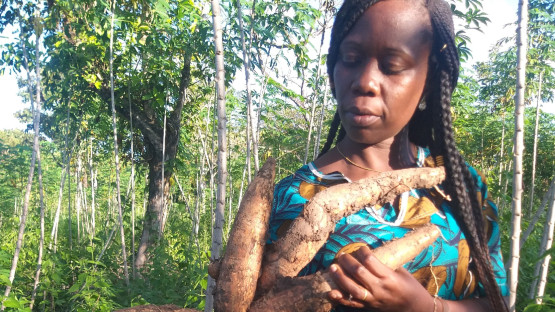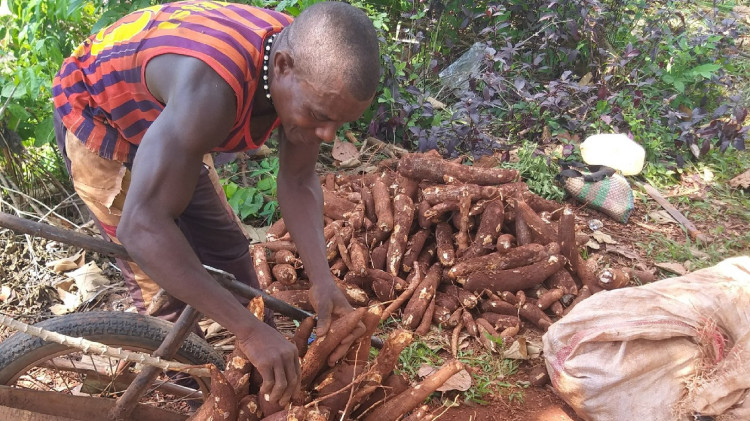One of the most important food security crops in Africa is cassava, a root vegetable eaten by around half a billion people every day. Africa produces nearly 200 million tonnes of cassava every year, around 60 per cent of the world’s total production. However, due to climate change, water scarcity and declining soil fertility, cassava yields are being adversely affected across the continent, causing many people to face food shortages and malnutrition. Experts from the IAEA and the Food and Agriculture Organization of the United Nations (FAO) are working to help African farmers mitigate these effects of climate change by sharing sustainable and efficient nutrient, water and soil management practices.
“Thanks to the knowledge we’ve gained here about climate-smart agricultural practices, we are now more informed and better equipped about cassava production and hope to use this knowledge to improve our yields,” said Misses Unu, a farmer from Nigeria, as he sat on the field after the harvest, looking at the piles of large cassava roots. He and many other local farmers in over a dozen African countries participated in field demonstration trials run by the joint IAEA/FAO Centre in the IAEA’s Department of Nuclear Science and Applications. This was aimed at training them to grow more and better-quality cassava using nuclear and related climate-smart agricultural techniques. The trials were conducted from 2021 to 2023 and continue to take place in a number of countries.
Cassava is a starchy root vegetable that looks like a sweet potato. It is the third most important source of calories in the tropics after rice and maize. First brought to Africa by Portuguese merchants from Brazil in the 16th century, over the years it has become the continent’s most produced cash crop, deeply embedded in local cuisine. Literally, every part of this crop can be used. While the leaves are rich in protein, the root can be boiled, steamed, fried, cut into chips or turned into starch, flour or animal feed. Cassava is also relatively easy to grow as it adapts well to harsh environmental conditions, including high temperatures and drought. Due to its hardiness, farmers often think there is no need to apply nutrient and water to grow cassava, but after a few years, this leads to nutrient-mining and low crop productivity.
To enhance food security and increase the incomes of cassava farmers, the IAEA launched a technical cooperation project in 2020 in collaboration with local research institutes and farmer associations in Africa. Farmers in several African countries were able to double and even triple their cassava yields by applying nutrient, water and soil management practices, developed by experts from the Joint FAO/IAEA Centre of Nuclear Techniques in Food and Agriculture.








